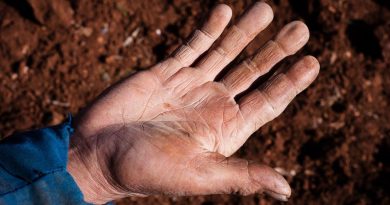Shot of a Lifetime: How Two Pfizer Manufacturing Plants Upscaled to Produce the COVID-19 Vaccine in Record Time
MRNA VS. CONVENTIONAL VACCINES
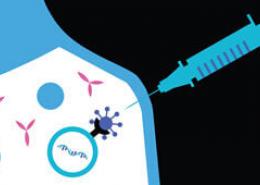
Working Together to Empower Women

Reducing Health Disparities in Latino Communities

Pfizer Women’s Resource Group
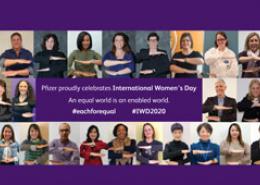
Universal vs. Single Payer Healthcare

After Pfizer and BioNtech signed a letter of intent in March of 2020 to work together on a vaccine, two Pfizer facilities were swiftly selected for developing the processes and manufacturing the product at an industrial scale. Located in Puurs, Belgium and Kalamazoo, Michigan, both plants had the space, the know-how, the people, and the equipment to get to work right away. Their locations in the U.S. and Europe positioned them well for global distribution.
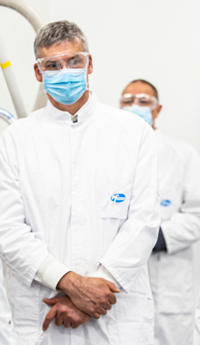 But even with all of the right components, there were so many questions. “At that point in time, we didn’t know yet how big the pandemic would be. Many people believed this was going to be over in a few months, like a flu pandemic,” says Luc Van Steenwinkel, Vice President Pfizer Biotech Operations and Site Lead of Pfizer Puurs. Further, an mRNA vaccine, like they were working on, had never been approved on a small scale, much less a global scale.
But even with all of the right components, there were so many questions. “At that point in time, we didn’t know yet how big the pandemic would be. Many people believed this was going to be over in a few months, like a flu pandemic,” says Luc Van Steenwinkel, Vice President Pfizer Biotech Operations and Site Lead of Pfizer Puurs. Further, an mRNA vaccine, like they were working on, had never been approved on a small scale, much less a global scale.
But there was no time for debate. If there was one thing that everyone felt down to their core, it was the ticking of the clock. “From CEO Albert Bourla through the organization, the message was clear, the direction was clear, the priorities were clear, and the decision-making was really streamlined,” says Patrick McEvoy, Senior Director of Operations and Engineering with Pfizer, based in Kalamazoo. “We really didn’t have a lot of time to dwell on it.”
A massive manufacturing undertaking
Working in tandem, the teams at Puurs and Kalamazoo ordered equipment and vessels they thought they’d need. For the next 100 days, their goal was to build a formulation lab, design an industrial process, and produce the first batches of what they hoped would be an effective vaccine — one that could, in time, be distributed around the world, helping to put an end to the pandemic. The teams started changing existing filling lines, building formulations booths and new filling lines, constructing packaging lines and a “freezer farm,” while recruiting and training new colleagues. “All those were investments at risk, that’s the bet we took,” says Van Steenwinkel.
In Puurs, at the very beginning, they had space in three small rooms in a new building. In Kalamazoo, they used an existing formulation area that was already being used to produce two life-saving medications. Before they could use that area for the vaccine, they went into overdrive to produce those two medications, so they didn’t run into any shortages during the construction phase.
To keep with their aggressive timeline, the team decided to manufacture multiple investigational COVID-19 vaccine formulations in tandem, to be ready whenever a decision was made. Along the way, both facilities would also hire and train new colleagues to help accomplish the monumental task. All of this, of course, amid a surging pandemic. Protections were put in place to keep workers safe and to minimize downtime.

Relying on video calls to communicate and operating at all hours of the day and night, the two teams alternated working on different engineering steps and learning from one another. “We didn’t have the time to develop a Kalamazoo process and a Puurs process. We had to focus on creating one process we could both use,” says McEvoy.
In separate countries, joined by a common purpose, they worked to formulate lipid nanoparticles—a notoriously tricky process—that would protect and guide the mRNA, which programs cells to produce antibodies to fight off COVID-19 by introducing a protein found on the surface of the virus1. They collaborated on methods to purify the RNA using a process called tangential flow filtration, which removes unneeded materials.
They embarked on a sterilization process to make the vaccine safe for injection. And they established a filling process to place the vaccine in vials, which were then labeled and placed in boxes in the freezers they’d bought for this very task. In fact, Puurs would go on to purchase nearly 1,000 deep freezers and Kalamazoo would buy nearly 600 freezers that are larger in size. And, at every stage of the process, they worked to conduct the numerous safety and quality tests needed.
Within those first 100 days, the first manufacturing run was a success. By late July, when the Pfizer-BioNTech team selected the vaccine candidate that appeared to be the most promising, the manufacturing teams were ready to ramp up production for clinical trials while also building stockades for real-world use in hopes of success. In November 2020, when they learned of the vaccine’s efficacy in the midst of clinical trials, they were ecstatic.
But people around the world were still dying. There was no time for celebration.
“The motivation of people to go for this, to make the impossible possible is so energizing,” says Van Steenwinkel. “It keeps people going,”
Solving for shipping
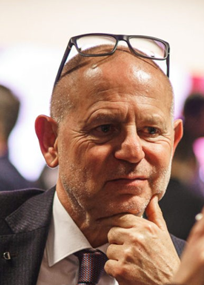 As the manufacturing puzzle came together, Vice President of Pfizer Intercompany Operations Danny Hendrikse and his team were hard at work figuring out how they would get the vaccine quickly and efficiently to people all across the world. The team relied on 40 years of experience as professional problem solvers to address what would be the biggest professional challenge of their life: developing the plan for the distribution of a vaccine that didn’t yet exist, at quantities they didn’t know, to locations that were yet-to-be-determined. “The vaccine had been developed and produced in record time, and that’s what we had to do as well with the design, production, testing, and execution of the first shipment from an end-to-end perspective,” says Hendrikse.
As the manufacturing puzzle came together, Vice President of Pfizer Intercompany Operations Danny Hendrikse and his team were hard at work figuring out how they would get the vaccine quickly and efficiently to people all across the world. The team relied on 40 years of experience as professional problem solvers to address what would be the biggest professional challenge of their life: developing the plan for the distribution of a vaccine that didn’t yet exist, at quantities they didn’t know, to locations that were yet-to-be-determined. “The vaccine had been developed and produced in record time, and that’s what we had to do as well with the design, production, testing, and execution of the first shipment from an end-to-end perspective,” says Hendrikse.
One of the few things they did know, in those early days, was that the vaccine would need to be kept at a colder temperature than any other product they’d worked with. “We knew we’d need to ship a vaccine at -75 Celsius, which we have never done before,” says Hendrikse, who is based in Zaventem, Belgium, about 30 minutes from the Puurs facility.
In less than six months, the team designed a thermal shipping box the size of a carryon suitcase that would keep the vaccine ultra-cold when packed with dry ice. For security, safety, and tracking purposes, the team implemented an end-to-end process with real-time monitoring loggers that track the precise temperature and location and communicate that information in real time to control towers that operate 24 hours a day, seven days a week. At any given moment, the internal and external control towers can look at a screen and know exactly where every shipment is and how cold it is. And the team devised, for the first time, a supply chain capable of shipping the vaccine from the plant directly to the point of use where it will be used without stops along the way. “We are able to deliver that vaccine at a success rate of 99.998 percent, which is unseen in the industry,” says Hendrikse.
The work continues
While establishing these new processes has been a feat, it’s still early days. Throughout Pfizer, the teams work on refinement while continuing to ramp up production. Both facilities have increased the number of batches they make as well as the batch size to produce more than 100 million doses a month. At Kalamazoo, they’ve built two additional formulation suites, using 13,000 square feet of modular rooms that were shipped from Texas.
In Puurs, too, they’ve built a second formulation unit and are working on constructing a third. And the number of filling lines in Puurs increased rapidly as well: in September 2021 they already started using a 6th COVID-19 filling line. And when certain lipids they needed became hard to find, they began producing their own. By bringing on two additional European-based facilities to be part of the global supply chain network by the end of 2021, Grange Castle (Ireland) and Zagreb (Croatia) will contribute to the worldwide supply of the vaccine. All the while, they’ve continued partnering with contract manufacturing organizations (CMOs) to further increase production as they work towards their goal of 3 billion doses in 2021. “Adding flexibility and increasing volume has been key. Meanwhile, we continued to manufacture our more than 400 million units of other vaccines and injectables per year, for millions of patients around the world,” underlines Van Steenwinkel.
The task is Herculean. And the work has been as memorable as anything could be. When McEvoy considers the impact on his personal life, his mind goes to his 83-year-old father, who is immunocompromised. “He needed to have this vaccine. If he would catch COVID, it was a matter of life or death,” he says. The same is true, he adds, for his wife’s parents. Knowing that they all received the vaccine makes him immensely proud. “It’s a rare time,” says McEvoy. “There aren’t many projects in the history of mankind that have had this scope, and to be a small part of that is incredibly rewarding.”
For Van Steenwinkel, the time he’s dedicated to the vaccine hasn’t felt like a job, but a higher calling. “You’re working actually to save the world, to end the pandemic, to save mankind. When you see on the news how many people die every day, there is no bigger motivator to work on something,” he says.
Now, as vaccination rates rise, Van Steenwinkel says he feels grateful to have played a role. “It’s very rewarding to see this progress, and you see that pride and honor throughout the whole organization,” he says. “People are so proud that they can work for Pfizer, that they can contribute to making this happen. When working for Pfizer, you are making impact, and today that is more visible than ever.”
Read more from the Shot of a Lifetime series:
- Shot of a Lifetime: How Pfizer and BioNTech Developed and Manufactured a COVID-19 Vaccine in Record Time
- Shot of a Lifetime: How Pfizer is Partnering with CMOs to Increase COVID-19 Vaccine Production and Reach More People
- Shot of a Lifetime: How Pfizer Developed its Own Raw Materials to Ensure a Steady Supply for the COVID-19 Vaccine
1. CDC. Understanding m-RNA COVID-19 Vaccines. Available at https://www.cdc.gov/coronavirus/2019-ncov/vaccines/different-vaccines/mrna.html. Accessed 9/30/21.
Source: Read Full Article



